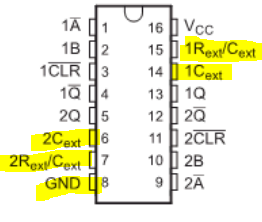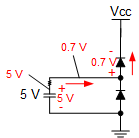Datasheet 10.2.1.1 Power-Down Considerations:
-- When a system containing this device is powered down, the capacitor can Discharge from VCC through the protection diodes at pin 2 or pin 14.
-- I think that the built-in protection diode is connected between the Rext/Cext pin and VCC, so Isn't it pin 7 or pin 15 (Rext/Cext) to VCC instead of pin 2 or pin 14?
Regards,
Kohei Sakata
-
Ask a related question
What is a related question?A related question is a question created from another question. When the related question is created, it will be automatically linked to the original question.




